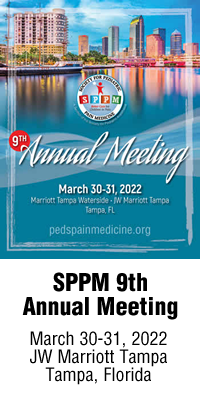Annual Meeting Research
Opioid-Free Surgery in Infants – Is Spinal Anesthesia the Answer?
By Ashlee Holman, MD and Yanislaedy Paez, MD
Department of Anesthesiology
University of Michigan
Ann Arbor, Michigan
Between 1999-2016, nearly 9,000 children died from opioid poisoning in the USA. Reducing opioid exposure during and after surgery presents an opportunity to avoid unnecessary exposure in this population. We retrospectively examined the implementation of a spinal anesthesia protocol on perioperative opioid administration in 63 patients < 2 years of age who underwent circumcision or orchidopexy under spinal anesthesia or general anesthesia and whose caregivers were surveyed after discharge as part of a quality improvement project aimed at assessing postoperative pain and analgesic use.
Study outcomes included perioperative analgesic use, recovery room pain scores, pain control after discharge, and presence of opioid-related side effects. Our results were very encouraging. The spinal anesthesia group received significantly less Oral Morphine Milligram Equivalents (p<0.0001) with significantly lower FLACC scores (p=0.004) and recovery room time (p=0.03) in comparison to the general anesthesia group. Perioperative non-opioid analgesic use did not differ between spinal anesthesia and general anesthesia patients, except for higher acetaminophen use in the general anesthesia group (p=0.001).
Post-hospital course showed no significant difference between spinal anesthesia and general anesthesia groups in terms of parental opinion of pain control (p=0.066) or in number of painful days after surgery (p=0.867). GA patients used significantly more nonsteroidal anti-inflammatory drugs (p=0.046).
We found no difference in side effects between the groups. In conclusion, use of a spinal anesthesia protocol for infant circumcision and orchidopexy allowed for opioid-free surgery with post-hospital analgesic outcomes equivalent to or better than those who received general anesthesia plus opioids perioperatively.




